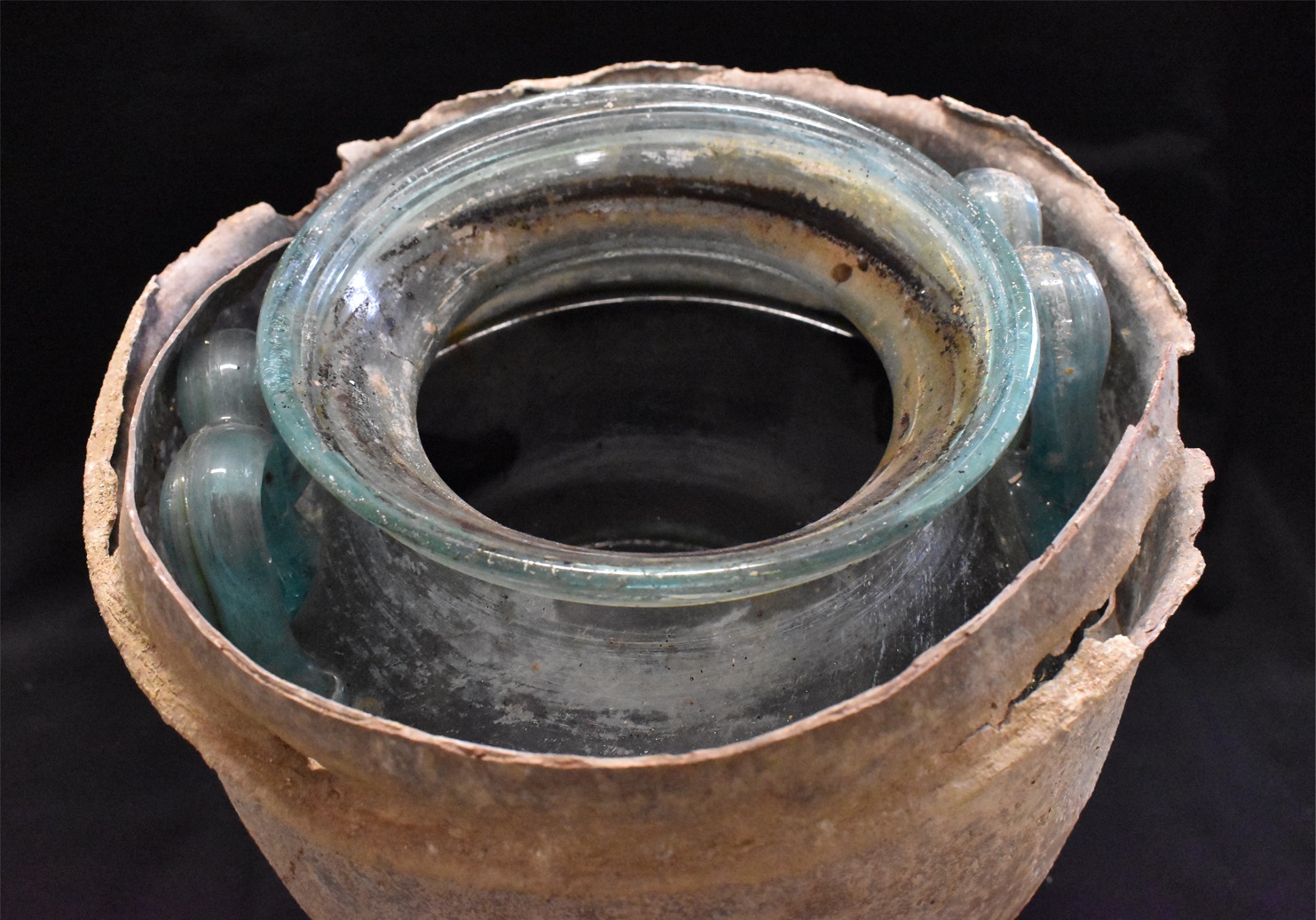Archaeologists have discovered the oldest known preserved wine, a 2,000-year-old white wine of Andalusian origin.
The origins of wine is debatable, with some sources citing the invention to China, or from Georgia, Iran, and Armenia. Wine was an integral part of the Roman diet and most major wine-producing regions of Western Europe were established during the Roman Imperial era.
The wine was found in a Roman era tomb in the Spanish town of Carmona. It was used for a funerary rite, where the wine was placed in a glass urn and used to immerse the cremated remains of one of the deceased.
“At first we were very surprised that liquid was preserved in one of the funerary urns,” said the City of Carmona’s municipal archaeologist, Juan Manuel Román. “After all, 2,000 years had passed, but the tomb’s conservation conditions were extraordinary and allowed the wine to maintain its natural state.”
Ancient wines absorbed into vessel walls or their residues can be identified using specific biomarkers. However, the example from Carmona is the first instance where the wine has been analysed while still in its liquid state.
The results of the study, published in the Journal of Archaeological Science: Reports, applied high-performance liquid chromatography-mass spectrometry (HPLC-MS) to identify the polyphenols in the liquid, allowing it to be identified as white wine.
Identifying the origins of the wine was challenging due to the absence of surviving samples from the same period for comparison. However, the mineral salts in the liquid suggest that the wine may originate from the former province of Betis, particularly the Montilla-Moriles region.
A second urn contained the remains of a cremated woman but no traces of a liquid or wine. According to the paper authors: “The fact that the man’s skeletal remains were immersed in the wine is no coincidence. Women in ancient Rome were long prohibited from drinking wine. It was a man’s drink.”
Header Image Credit : Juan Manuel Román
Sources : Daniel Cosano, Juan Manuel Román, Dolores Esquivel, Fernando Lafont, José Rafael Ruiz Arrebola, “New archaeochemical insights into Roman wine from Baetica”, Journal of Archaeological Science: Reports, vol. 57, 2024, 104636. https://doi.org/10.1016/j.jasrep.2024.104636





